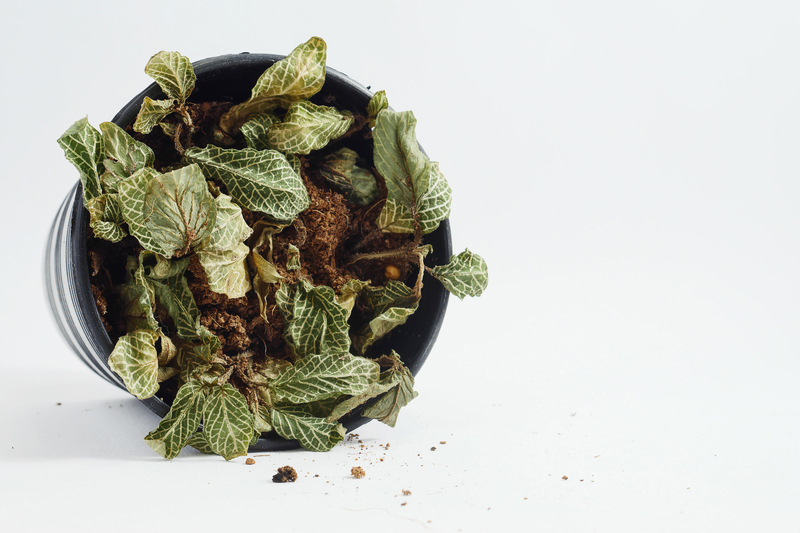Soil Preparation Techniques for Successful Harvests
Posted on 12/03/2024
Soil preparation is an essential part of successful plant growth. Without proper soil preparation, plants may not be able to access the nutrients they need for vigorous, high-yield harvests. The right soil preparation techniques can help promote healthy, vibrant root systems and prevent diseases from affecting your crops. This article will explore the various soil preparation techniques that can help you achieve higher yields and healthier harvests.
Soil Type Matters
The type of soil you are working with will affect the kinds of soil preparation techniques you need to use. Different soils have different characteristics and levels of fertility, and they require different methods of care.
For example, sandy soils retain less water than clay soils, so they tend to require more frequent watering during growing season. If you are planting in a sandy soil, try mulching around your plants to help with water retention. Clay soils, on the other hand, are much more moisture-retentive but can be prone to heavy weed growth. Consider using cover crops or shallow cultivation techniques in order to keep weed growth in check.
No matter what type of soil you're dealing with, it's important to consider the existing fertility levels before beginning any soil preparation technique. Your local university extension office should be able to provide a detailed analysis of your soil's nutrient content and pH levels.

Tillage Techniques for Soil Preparation
Tillage is the process of breaking up and loosening the soil in order to prepare it for planting. There are several types of tillage techniques that can be used depending on the type of soil you're working with:
Moldboard plowing - This is the most traditional method of tillage and involves using a tractor or other equipment to turn over the top 6-12 inches (15-30 cm) of soil on a regular basis. It helps aerate and loosen hard-packed soils while also stirring up weed growth and releasing essential nutrients into the surface layer of soil.
Disk harrowing - Disk harrowing is similar to moldboard plowing but doesn't involve turning over the full depth of soil as with plowing. Instead, disking involves passing one or more disks over and through the surface layer of soil in order to break up clumps and loosen compacted earth. Disks may also be used in conjunction with moldboard plowing in order to further reduce compaction throughout deeper layers of soil.
Rototilling - Rototilling is a great way to aerate even heavily compacted soils and prepare them for planting without resorting to moldboard plowing or disking. That said, this method does require specialized equipment for best results; it's not something typically done by hand due to its tiring nature. Additionally, rototilling may inadvertently bring weed seeds up from deeper layers of soil so it's important to take steps such as mulching afterwards in order help prevent unexpected outbreaks of weeds near your plants.
Organic Matter Incorporation Techniques
Incorporating organic matter into your soil is an important step in promoting optimum fertility levels for successful plant growth. Organic matter such as compost, manure, leaf litter or grass clippings will act as both a fertilizer and a way to improve overall water retention capabilities within your garden bed or field plot. Organic matter incorporation can be achieved by either digging it directly into the ground or by spreading it across the surface layer then incorporating it down with tillage techniques such as plowing or disking. Keep in mind that incorporated organic matter tends to break down quickly during wet conditions if exposed directly at the surface layer so it's important to work it into deeper layers whenever possible prior to planting time.
Green Manuring For Soil Preparation
Green manuring is a form of cover cropping which involves planting specific species such as legumes in order to add additional organic matter while also suppressing weed growth within your fields or garden beds. Legumes naturally fix nitrogen from air into their root systems which can then replenish depleted nitrogen stores within soil beds when these plants are turned into cover crop mulch or composted after harvest time. Green manures also hold onto moisture better than unprotected soils due their extensive root networks which help reduce runoff and ultimately lead towards healthier yields overall. With green manuring (or any kind of cover cropping), timing is critical as some warm season crops like beans, corn and squash must begin germinating soon after green manure crop has finished blooming in order to ensure maximum growth potential prior harvest time compared with cold season crops like cereal grains whose germination times must be carefully timed relative towards ending frost dates within your particular region.

No-Till Techniques for Soil Preparation
No-till farming involves using crop rotation strategies along with minimum quantities (if any) of tillage operations in order cultivate successful harvests year after year without overly disturbing underlying biological processes within your soils. No-till farming offers numerous advantages over standard tilling practices such as reduced erosion potential along with increased nutrient availability from avoiding repeated loss due mechanical disruption; increased water holding capacity since tilled soils allow greater amounts water evaporation versus lightly cultivated no-till beds; improved drought resilience since no-till farming helps limit dehydration effects by maintaining higher numbers microbial populations which assist plant roots accessing crucial moisture reserves within deeper layers below ground level; and fewer maintenance costs since there's little need purchase specialized tillage equipment when following no-till practices. Although no-till farming requires more initial planning than conventional methods do, its benefits often outweigh associated costs once established within agricultural operations.
Conclusion
Soil preparation is an important step towards achieving successful harvest yield years after year regardless which gardening/farming technique being applied. Whether using standard tillage operations like moldboard plowing/disking or utilizing movement conservation strategies via no-till farming/green manuring there's always something landowners/farmers can do ensure their soils providing highest quality harvests regardless growing conditions during given years. In summary, proper preparation plays key role ensuring success regardless which garden/field plans being implemented today!




